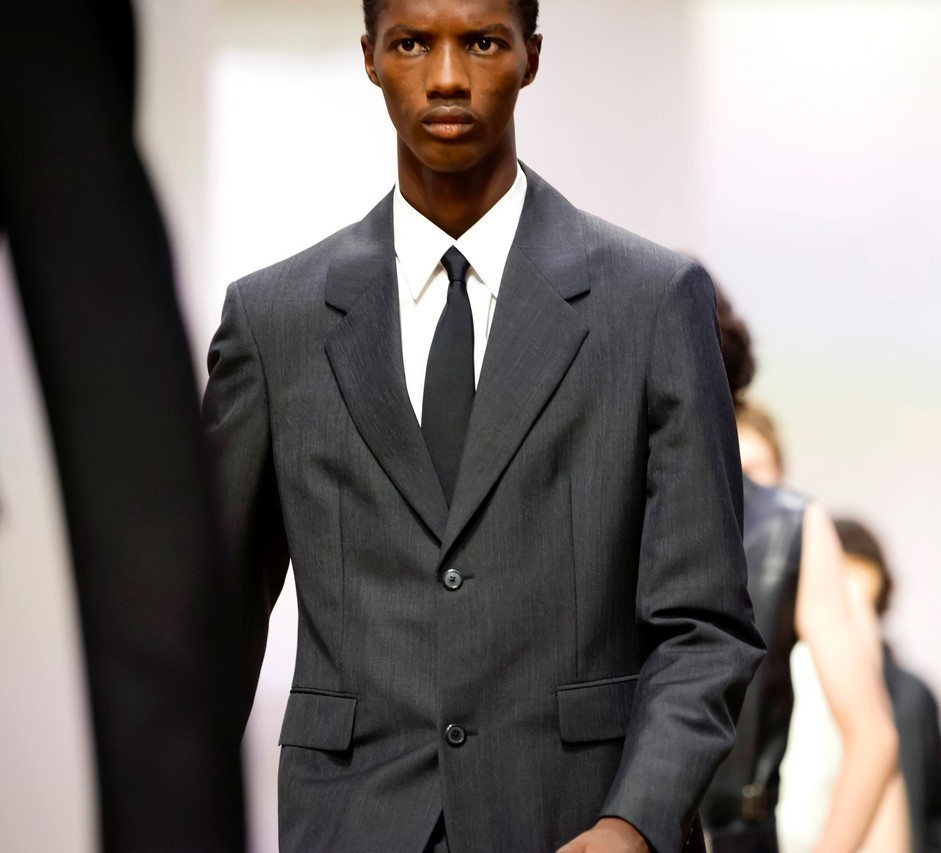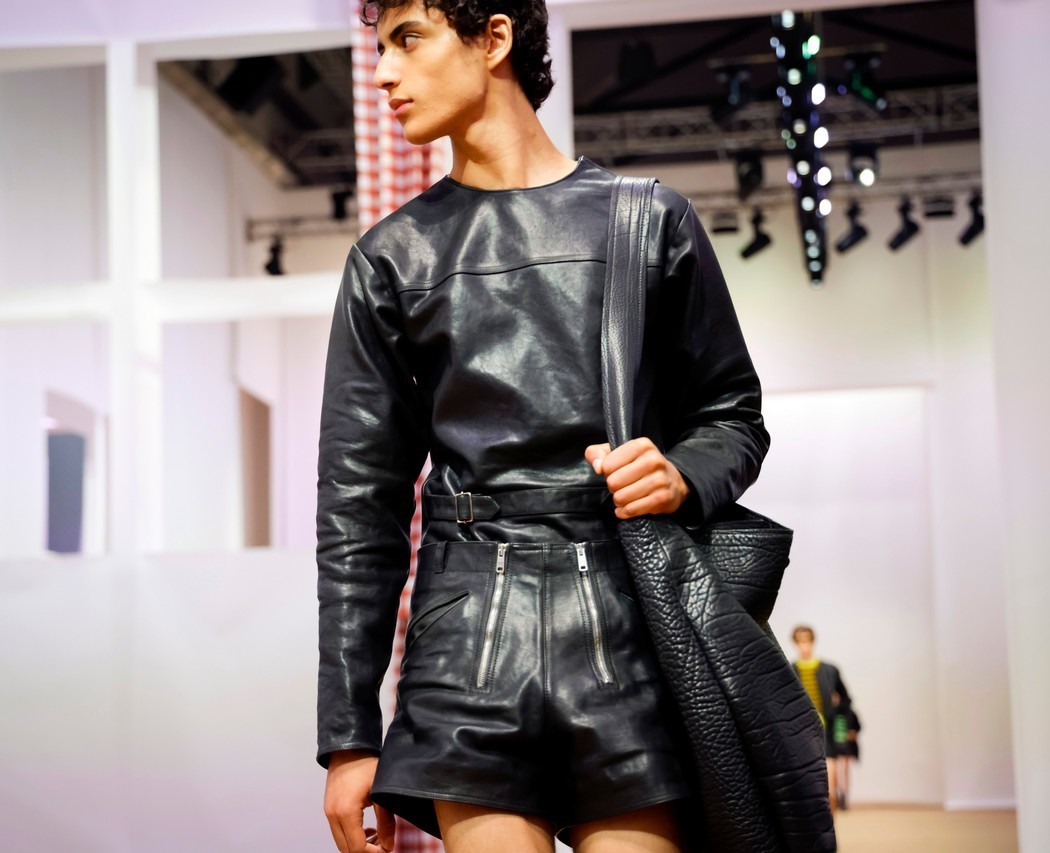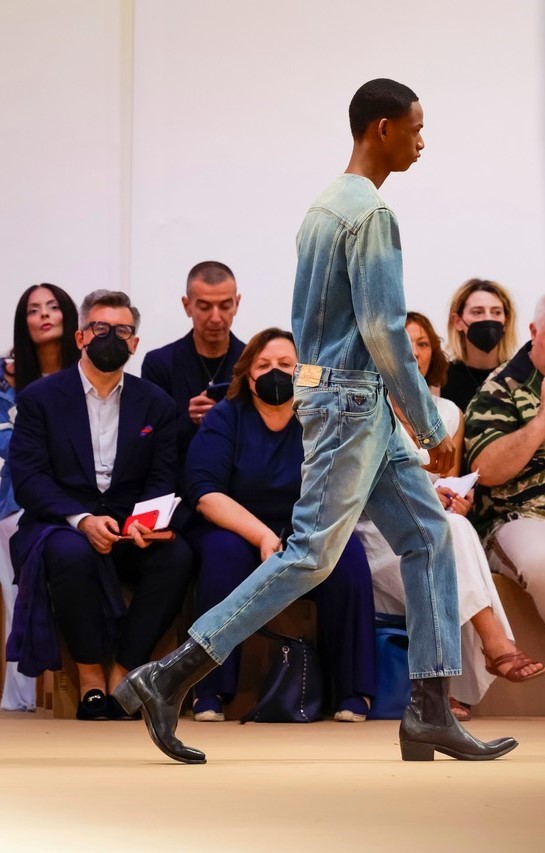Dressing simply, but well. It’s not so simple
By Agence France-Presse
last updated: Jun 29,2022

MILAN, Italy — Conjuring the pleasures of being “well, but simply, dressed” is how
Brunello Cucinelli describes a design brief that has turned him, the son of an
Umbrian farmer, into a self-made billionaire.اضافة اعلان
It goes without saying that simplicity at the Cucinelli level does not come cheap. For an impeccably tailored cotton Cucinelli blazer — one, say, from a canny new collection heavy on suiting, that resembles a cotton Brooks Brothers seersucker sack as reimagined for Gianni Agnelli — you can expect to pay $4,000.
You might think numbers like that would make even an HNWI (wealth manager speak for a “high net worth individual,” defined as someone with at least $1 million in liquid capital) think twice before slapping down that American Express Centurion. Yet incipient sticker shock did not prevent the publicly traded Brunello Cucinelli brand from sailing through the pandemic (after an initial slump during the first lockdown in 2020); expanding and opening stores in Tokyo, London, and New York; or charging into a bear market with bullish confidence.

“Men want to dress again,” Cucinelli said on Saturday during a presentation at a studio in Milan’s Chinatown.
His own money, he added, is on prosperous Gen Z consumers — or at least the CEO types for whom Cucinelli is their Gap — wanting to trade their Allbirds and hoodies for the kind of sartorialism he excels at producing. “Nonchalant elegance” is the phrase he prefers in describing the intended effect of his unlined suits that are structured, but not overbuilt; light in appearance, though still plausible in a boardroom; and tonally faithful to the neutral palette that is the safety default of new wealth.
That is not to be mistaken for “sprezzatura,” that over-deliberate offhandedness that even Italians seldom pull with any success. Agnelli, let’s face it, often looked somewhat absurd in his impractical denim ski togs, slouchy driving shoes, and wrist watches worn outside his cuffs.
What Cucinelli was alluding to is something universal and rooted in both self-awareness and an adherence to protocols of decorum in public spaces that is close to kaput. Can it be restored? It is hard to say anymore and particularly so after two years of futon living and waist-up Zoom attire. Upselling the notion that dressing is as much a civic as a personal act will take some doing.
Yet labels of various stripes signaled a readiness to take the chance. In certain ways it almost felt as if this week in Milan was the menswear version of a Hail Mary pass. Not to belabor a hackneyed metaphor, but designers here did move the ball down the field.
In a show held outdoors under mercifully shaded walkways on the campus of Bocconi University, Kean Etro mounted what was perhaps the best show of his decades-long career. Designers sell moods and atmospheres as much as garments, and watching the Etro models, many barefoot and wearing gold toe rings, strut a ribbon of concrete in blousy summer shorts, shirts with lacelike openwork patterns, flowing gossamer capes, soft suits, all of it in washed-out colors or dissolving prints, felt like being an extra in one of Luca Guadagnino’s dreamy homages to filmmakers like Michelangelo Antonioni.

Wherever those models were going dressed like that, you suddenly wanted to follow them. People often joke about retail therapy. Yet it is too little appreciated how effective and necessary a form of escapism fashion can be.
Does that mean this critic is ready to apply for a visa to Versaceworld? Probably not. Yet for a brief giddy time in the garden of the house’s 18th-century palazzo, we were transported to another realm as models, improbably toting Versace urns and vases, or wearing espresso cups as belt ornaments, paced through the pebbled walkways past revolving mirrored columns capped with gilded busts. Cockamamie classicism, after all, is a signature of a house with a Medusa logo.
You probably could not have found five people in the crowd capable of naming any of the 58 world heritage sites located in Italy. Still the house prints telegraphed something obviously antique, like refrigerator magnets depicting Michelangelo’s David. That they are outrageously kitsch goes without saying. Yet it is in her exuberant embrace of borderline vulgarity that Donatella Versace finds humor and a sweet spot. The result was a collection featuring outsize python print trousers, pervy latex raincoats, tailored jackets, onesies for men, and models with their hair trained in Roman-bust waves lacquered with gold glitter.
Aptly, the Emporio Armani collection did in fact feature subtle weave prints, most notably rendered in a molded rubber Wave shoe with a bristling texture — think Wookiee Crocs — as well as monochrome suiting, summery shorts suits, drawstring linen trousers with paper bag waistbands, and a jacket with a palm tree painted on it. Aside from a hairstyling misstep that put models of varying ethnicities in cornrows, the show seemed well judged for a cultural moment when consumers, no matter what gender, are taking baby steps back in the direction of sartorial tradition.
It may seem odd that a designer crowding 90 (Armani’s 88th birthday is next month) seems more attuned to his moment than someone like Miuccia Prada, who for decades has demonstrated a diviner’s knack for anticipating what’s next. The Prada collection, designed with Raf Simons, featured skinny black one-and-a-half breasted suits, denim coveralls, and zippered flap-front leather short shorts based on lederhosen. Within minutes of the show’s finale, Instagram was flooded with nearly identical source imagery from the world of kink.

While there is no knowing how harmonious Simons’ and Prada’s working partnership is, it sometimes seems to this observer that what is needed in her working life is less a fellow designer than a conspirator. Until her death in 2015, that person was the Italian photographer and style eminence Manuela Pavesi. It does no service to a person of Prada’s talents to suggest she requires a crutch. Yet, absent the leavening spirit of the woman the designer Jonathan Anderson, himself a Prada alumnus, once described as having so wacky and unfettered an eye that one automatically wanted to know her, the atmosphere of the Prada runway has grown a bit dour.
Her show felt like the antithesis of a charming Gucci capsule collection, designed by Alessandro Michele with Harry Styles (and labeled Gucci HA HA HA, for their paired initials). The 25-piece grouping of wide-lapel suits, shirts printed with grumpy bears and cherries, tailored pajamas, hats and ties wide enough to appeal to Bozo had about them a joyful sprightliness.
The mood of the presentation, held in a celebrated Milanese secondhand shop, was so fizzy that when Michele and Styles met to design, they must have been as contented as two toddlers in a mud puddle. Perhaps Prada could use a Harry Styles of her own. They might start with a play date.
Read more Fashion
Jordan News
It goes without saying that simplicity at the Cucinelli level does not come cheap. For an impeccably tailored cotton Cucinelli blazer — one, say, from a canny new collection heavy on suiting, that resembles a cotton Brooks Brothers seersucker sack as reimagined for Gianni Agnelli — you can expect to pay $4,000.
You might think numbers like that would make even an HNWI (wealth manager speak for a “high net worth individual,” defined as someone with at least $1 million in liquid capital) think twice before slapping down that American Express Centurion. Yet incipient sticker shock did not prevent the publicly traded Brunello Cucinelli brand from sailing through the pandemic (after an initial slump during the first lockdown in 2020); expanding and opening stores in Tokyo, London, and New York; or charging into a bear market with bullish confidence.

“Men want to dress again,” Cucinelli said on Saturday during a presentation at a studio in Milan’s Chinatown.
His own money, he added, is on prosperous Gen Z consumers — or at least the CEO types for whom Cucinelli is their Gap — wanting to trade their Allbirds and hoodies for the kind of sartorialism he excels at producing. “Nonchalant elegance” is the phrase he prefers in describing the intended effect of his unlined suits that are structured, but not overbuilt; light in appearance, though still plausible in a boardroom; and tonally faithful to the neutral palette that is the safety default of new wealth.
That is not to be mistaken for “sprezzatura,” that over-deliberate offhandedness that even Italians seldom pull with any success. Agnelli, let’s face it, often looked somewhat absurd in his impractical denim ski togs, slouchy driving shoes, and wrist watches worn outside his cuffs.
What Cucinelli was alluding to is something universal and rooted in both self-awareness and an adherence to protocols of decorum in public spaces that is close to kaput. Can it be restored? It is hard to say anymore and particularly so after two years of futon living and waist-up Zoom attire. Upselling the notion that dressing is as much a civic as a personal act will take some doing.
Yet labels of various stripes signaled a readiness to take the chance. In certain ways it almost felt as if this week in Milan was the menswear version of a Hail Mary pass. Not to belabor a hackneyed metaphor, but designers here did move the ball down the field.
In a show held outdoors under mercifully shaded walkways on the campus of Bocconi University, Kean Etro mounted what was perhaps the best show of his decades-long career. Designers sell moods and atmospheres as much as garments, and watching the Etro models, many barefoot and wearing gold toe rings, strut a ribbon of concrete in blousy summer shorts, shirts with lacelike openwork patterns, flowing gossamer capes, soft suits, all of it in washed-out colors or dissolving prints, felt like being an extra in one of Luca Guadagnino’s dreamy homages to filmmakers like Michelangelo Antonioni.

Wherever those models were going dressed like that, you suddenly wanted to follow them. People often joke about retail therapy. Yet it is too little appreciated how effective and necessary a form of escapism fashion can be.
Does that mean this critic is ready to apply for a visa to Versaceworld? Probably not. Yet for a brief giddy time in the garden of the house’s 18th-century palazzo, we were transported to another realm as models, improbably toting Versace urns and vases, or wearing espresso cups as belt ornaments, paced through the pebbled walkways past revolving mirrored columns capped with gilded busts. Cockamamie classicism, after all, is a signature of a house with a Medusa logo.
You probably could not have found five people in the crowd capable of naming any of the 58 world heritage sites located in Italy. Still the house prints telegraphed something obviously antique, like refrigerator magnets depicting Michelangelo’s David. That they are outrageously kitsch goes without saying. Yet it is in her exuberant embrace of borderline vulgarity that Donatella Versace finds humor and a sweet spot. The result was a collection featuring outsize python print trousers, pervy latex raincoats, tailored jackets, onesies for men, and models with their hair trained in Roman-bust waves lacquered with gold glitter.
People often joke about retail therapy. Yet it is too little appreciated how effective and necessary a form of escapism fashion can be.Giorgio Armani is a designer as rooted in heritage as anyone around. That he continues to design in his ninth decade is in itself a tribute to a traumatic personal history as a child of the Second World War. Armani arrived at his mature style early on and has seldom deviated from it. Although he rocketed to success in the 1980s, when the wider world discovered his softly tailored designs in the 1980 film “American Gigolo,” the overall pattern of his career has been cautious and methodical. Theme and variation is his working method, and if sometimes this risks monotony, when you stand back you can observe that what he is seeking is something durable as a tightly woven basket.
Aptly, the Emporio Armani collection did in fact feature subtle weave prints, most notably rendered in a molded rubber Wave shoe with a bristling texture — think Wookiee Crocs — as well as monochrome suiting, summery shorts suits, drawstring linen trousers with paper bag waistbands, and a jacket with a palm tree painted on it. Aside from a hairstyling misstep that put models of varying ethnicities in cornrows, the show seemed well judged for a cultural moment when consumers, no matter what gender, are taking baby steps back in the direction of sartorial tradition.
It may seem odd that a designer crowding 90 (Armani’s 88th birthday is next month) seems more attuned to his moment than someone like Miuccia Prada, who for decades has demonstrated a diviner’s knack for anticipating what’s next. The Prada collection, designed with Raf Simons, featured skinny black one-and-a-half breasted suits, denim coveralls, and zippered flap-front leather short shorts based on lederhosen. Within minutes of the show’s finale, Instagram was flooded with nearly identical source imagery from the world of kink.

While there is no knowing how harmonious Simons’ and Prada’s working partnership is, it sometimes seems to this observer that what is needed in her working life is less a fellow designer than a conspirator. Until her death in 2015, that person was the Italian photographer and style eminence Manuela Pavesi. It does no service to a person of Prada’s talents to suggest she requires a crutch. Yet, absent the leavening spirit of the woman the designer Jonathan Anderson, himself a Prada alumnus, once described as having so wacky and unfettered an eye that one automatically wanted to know her, the atmosphere of the Prada runway has grown a bit dour.
Her show felt like the antithesis of a charming Gucci capsule collection, designed by Alessandro Michele with Harry Styles (and labeled Gucci HA HA HA, for their paired initials). The 25-piece grouping of wide-lapel suits, shirts printed with grumpy bears and cherries, tailored pajamas, hats and ties wide enough to appeal to Bozo had about them a joyful sprightliness.
The mood of the presentation, held in a celebrated Milanese secondhand shop, was so fizzy that when Michele and Styles met to design, they must have been as contented as two toddlers in a mud puddle. Perhaps Prada could use a Harry Styles of her own. They might start with a play date.
Read more Fashion
Jordan News


